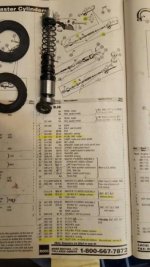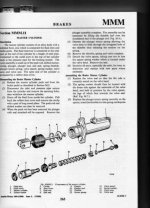Hmmm ... not sure that's how it works (but, as usual, I could be mistaken). When you apply pressure to the pedal--brake or clutch--a small, spring-loaded seal at the forward end of the cylinder--sometimes called a 'foot valve'--closes the line to the reservoir (if it didn't, you'd push fluid back into the reservoir instead of to the slave cylinders). When you release the pedal, the piston retracts, the foot valve opens and fluid is drawn from the reservoir in order to 'refill' the M/C. Fluid should never be pushed into the reservoir; if this happens the foot valve has failed. In fact, the test for a failed foot valve is observing the fluid level in the reservoir and if it rises any at all when the pedal is depressed the foot valve is leaking (in effect, the foot valve is a one-way check valve). I got a lesson in this when the foot valve in my brake M/C was damaged somehow, and had to drive over a thousand miles having to pump the pedal a couple times every time I needed to brake.
This relates to the discussion on the Healeys mailing list about the small spring in the clutch master cylinder which can apply pressure to the graphite release bearing, causing premature wear to the bearing and/or the clutch disk. If fluid was allowed to return to the reservoir the pressure would be released, but you'd have other problems.

 Hi Guest!
Hi Guest!

 smilie in place of the real @
smilie in place of the real @
 Pretty Please - add it to our Events forum(s) and add to the calendar! >>
Pretty Please - add it to our Events forum(s) and add to the calendar! >> 



